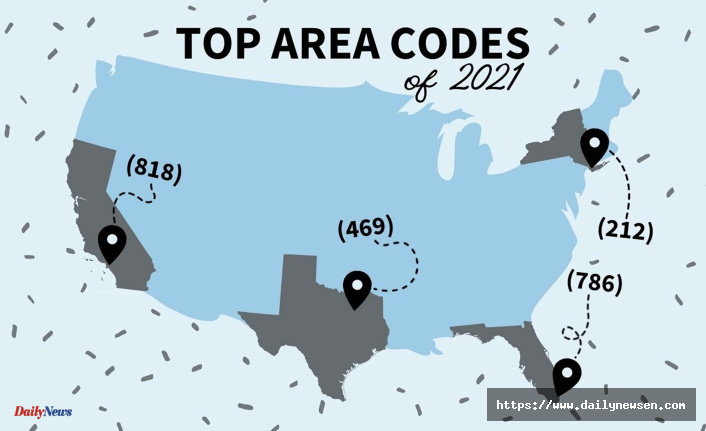Area codes, also known as "dialing codes," are the three-digit numbers that precede the seven-digit local phone numbers used to identify a specific geographic region in which the phone number is located. The North American Numbering Plan (NANP) is the system used in Canada, the United States, and several other countries in the Caribbean and Pacific regions. In this system, area codes are assigned to specific geographic regions, and each region has its own unique area code.
The purpose of area codes is to enable efficient and accurate call routing. When a person dials a phone number, the area code tells the phone system which region the call is originating from, and the call is routed to the appropriate local exchange. Without area codes, the phone system would be unable to efficiently route calls, resulting in confusion and a breakdown of communication.
The NANP was first established in 1947, when the United States and Canada agreed to establish a unified numbering plan. The plan was designed to facilitate direct long-distance calling between North American countries and to simplify the dialing process. At the time, the NANP consisted of 86 area codes, each assigned to a specific geographic region.
Over time, as the population of North America grew and the demand for phone numbers increased, more area codes were added to the NANP. Today, there are over 300 area codes in the NANP, with new codes added regularly to accommodate the growing demand for phone numbers.
Area codes are typically assigned based on population density, with more populous areas receiving multiple area codes to meet the demand for phone numbers. For example, the Los Angeles metropolitan area has multiple area codes, including 213, 310, 323, 424, 626, 818, and 909. By contrast, less populous regions may only have a single area code.
In some cases, area codes are also assigned based on geographic boundaries, such as state lines or regional boundaries. For example, the New York metropolitan area has multiple area codes, including 212, 646, 917, 718, and 347, each assigned to a specific borough or region within the city.
As the demand for phone numbers continues to grow, the NANP has developed a number of strategies to manage the assignment of area codes. One such strategy is "overlay" codes, in which a new area code is introduced to a region already served by an existing code. In an overlay system, both codes are used in the same geographic area, with new numbers assigned the new code while existing numbers retain the old code.
Another strategy used to manage area code assignments is "splitting" codes, in which an existing area code is divided into two or more smaller codes. This strategy is typically used in regions with a rapidly growing population or a high demand for phone numbers. Splitting a code can help to ensure that the supply of phone numbers remains sufficient to meet the demand, while also enabling efficient call routing and communication.
In addition to their practical function in enabling efficient communication, area codes have also become cultural touchstones in North American society. Many people take pride in their area code, which may be seen as a symbol of their identity and community. Area codes have also been featured in popular culture, appearing in songs, movies, and television shows as a shorthand for a particular region or location.
However, the ubiquity of area codes has also led to some challenges and controversies. In some cases, the assignment of area codes has been a source of conflict between neighboring regions or communities. Some people have also raised concerns about the potential for area codes to perpetuate stereotypes or stigmatize certain regions or communities.
Despite these challenges, area codes remain an essential component of the North American phone system, enabling efficient communication and connecting people across vast distances. As the demand
Area codes are a vital part of the North American phone system, enabling efficient communication and call routing between different geographic regions. Over time, the number of area codes has increased, with new codes introduced regularly to meet the growing demand for phone numbers. In this article, we will explore two specific area codes: the 844 area code and the 888 area code.
The 844 area code is a toll-free area code that was introduced in 2013 to supplement the existing 800, 888, 877, and 866 toll-free codes. Toll-free numbers allow callers to reach businesses or organizations without incurring any long-distance charges. The 844 code was added to the existing pool of toll-free numbers to meet the demand for new numbers, particularly as the popularity of toll-free numbers continues to grow.
Like other toll-free area codes, the 844 code is not tied to any specific geographic region. Instead, it can be used by businesses or organizations anywhere in the United States, Canada, or several other countries in the Caribbean and Pacific regions. When a caller dials a toll-free number with the 844 area code, the call is routed to the organization's phone system, regardless of where the caller is located.
The 888 area code is another toll-free code that was introduced in 1996, following the original 800 code that was introduced in 1963. Like the 844 code, the 888 code is not tied to any specific geographic region and can be used by businesses or organizations anywhere in North America. The popularity of toll-free numbers has led to the introduction of additional codes over time, including the 877, 866, and 855 codes.
Toll-free numbers with the 888 area code are widely used by businesses and organizations across a range of industries, including healthcare, finance, and technology. These numbers enable companies to provide customer support and service without incurring long-distance charges for their callers.
While toll-free numbers are a valuable tool for businesses and organizations, they have also been the subject of controversy and misuse. In some cases, toll-free numbers have been used for fraudulent or deceptive purposes, such as fake tech support scams or IRS impersonation scams. To combat these issues, regulatory agencies like the Federal Communications Commission (FCC) have implemented rules and regulations to prevent the misuse of toll-free numbers.
In addition to their practical function in facilitating communication and customer service, toll-free numbers and area codes have also taken on cultural significance in North American society. In some cases, businesses or organizations may choose to use specific area codes to evoke a particular image or identity, such as a regional or national presence. For example, a company based in California may choose to use the 888 area code to signal a nationwide presence, while a company based in Texas may opt for the 844 area code to evoke a local or regional identity.
In conclusion, area codes and toll-free numbers are an essential component of the North American phone system, enabling efficient communication and call routing across vast distances. The 844 area code and the 888 area code are two examples of toll-free codes that have been introduced to meet the growing demand for phone numbers and toll-free services. While toll-free numbers have been the subject of misuse and controversy, they remain a valuable tool for businesses and organizations to provide customer support and service.
Date Of Update: 06 February 2024, 19:15











